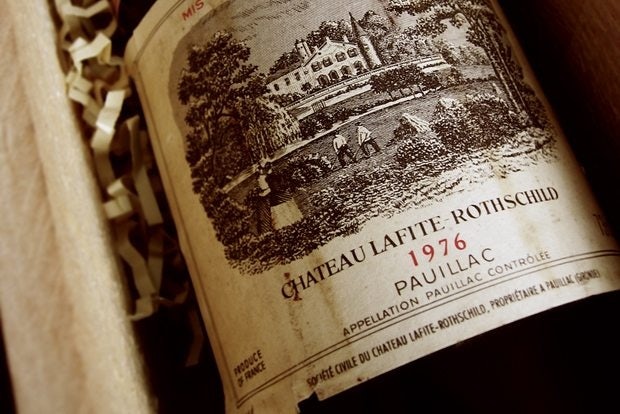
A senior official recently announced that China's fake wine problem is "very serious." (Flickr/Kevin O'Mara)
China’s love affair with popular Bordeaux wines such as Château Lafite has waned not only from the Chinese government's ongoing anti-corruption campaign, but also from dampened collector confidence in authenticity thanks to rampant counterfeits. As part of a newly launched program combat the country’s counterfeit problem, a senior Chinese government official recently revealed just how rampant he thinks the problem is: according to him, half of all the Château Lafite wine sold in China is fake.
Decanter reports that Li Xinshi, president of the Chinese Academy of Inspection and Quarantine (CAIQ), stated this estimate at a recent conference in Bordeaux announcing the Chinese government's launch of a new initiative called Protected Eco-Origin Product (PEOP) to protect against wine fraud. According to him, the bulk of fake wines are being manufactured on boats moored in international waters off the coast of the mainland, where low-end wines are bottled in containers with high-end labels. While he was unable to say how many boats with these operations exist, he described the problem of fake wine in China as “very serious.”
Decanter describes how the new PEOP system is intended to help fight fakes:
Bordeaux producers who want their wines to carry the PEOP label must first be certified by the Chinese government, explained the CEO of Advanced Track and Trade (ATT), Jean-Pierre Massicot. Massicot’s company has been brought on board by the Chinese government as an interlocutor between them and French wine producers who wish to join the PEOP scheme.
The labels will feature a number of visible and invisible codes, including QR codes that consumers can check with their phones. Not only are French wines considering labeling for protection, some Australian entrepreneurs are taking the same approach with mobile apps and labels as well.
Decanter reports that China has become the world's biggest market for Bordeaux wine, accounting for almost 20 percent of the region's wine exports by volume in 2013. The new program may help to keep it that way as consumers and producers are increasingly worried about ensuring the authenticity of their drinks, especially since many have fallen ill from drinking imitations.